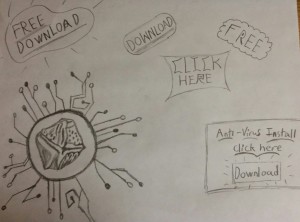Protoceratium reticulatum
More commonly known as Red Tide
Author: Nicholas Conti
Protoceratium Reticulatum fall under the largest group in the dinoflagellate family, the protists. It is a microorganism living just below the surface of the water column. This particular species is known for producing yessotoxin, a form of toxin that can be administered to humans through the ingestion of shellfish. If the shellfish have been in waters where a large bloom has occurred they are unable to be eaten as they will be carrying this toxin within their gills. The toxin produced is almost always in minute quantities and only shows real effect when in a large bloom.  This species of dinoflagellate is mycotrophic, this means that it photosynthesizes but also moves through the water column to digest prey. This gives them an advantage in survival as they do not have to rely on one single source for food.
This species of dinoflagellate is mycotrophic, this means that it photosynthesizes but also moves through the water column to digest prey. This gives them an advantage in survival as they do not have to rely on one single source for food.
Dinoflagellates have unique shells made out of calcium carbonate, each species has its own form for creating these shells, giving it a distinct and beautiful design.
Protoceratium Reticulatum are known to live almost exclusively in estuaries and along the shores in shallow waters. They much prefer cold coastal waters and bloom usually early spring but occasional blooms can be found as late as the beginning of winter. Their length is anywehere from 25 to 40µm with a width of 25 to 35µm.

length: 32µm, Width 24µm

Above is an image of what I believe my creature is representative of today in society. I believe it is similar to a computer virus, it uses other creatures, specifically shellfish, to infect humans, because of this we have created systems to make sure no infected shellfish make it into the market. Computer viruses are much the same, they can take the form of an email or downloadable content and then infect the computer, possibly accessing important personal files. We have created anti-virus software in order to stop these viruses from corrupting our computers. I believe these two are very similar. Much like we created systems to keep us safe from shellfish poisoning. We create software to keep us safe from computer viruses.
References:
The University of British Columbia.” EOS. N.p., n.d. Web. 18 Nov. 2015.
Dinoflagellates.” Dinoflagellates. N.p., n.d. Web. 18 Nov. 2015.
Dinoflagellates – Predators, Pathogens, and Partners by Eric Borneman – Reefkeeping.com.” Dinoflagellates – Predators, Pathogens, and Partners by Eric Borneman – Reefkeeping.com. N.p., n.d. Web. 18 Nov. 2015

